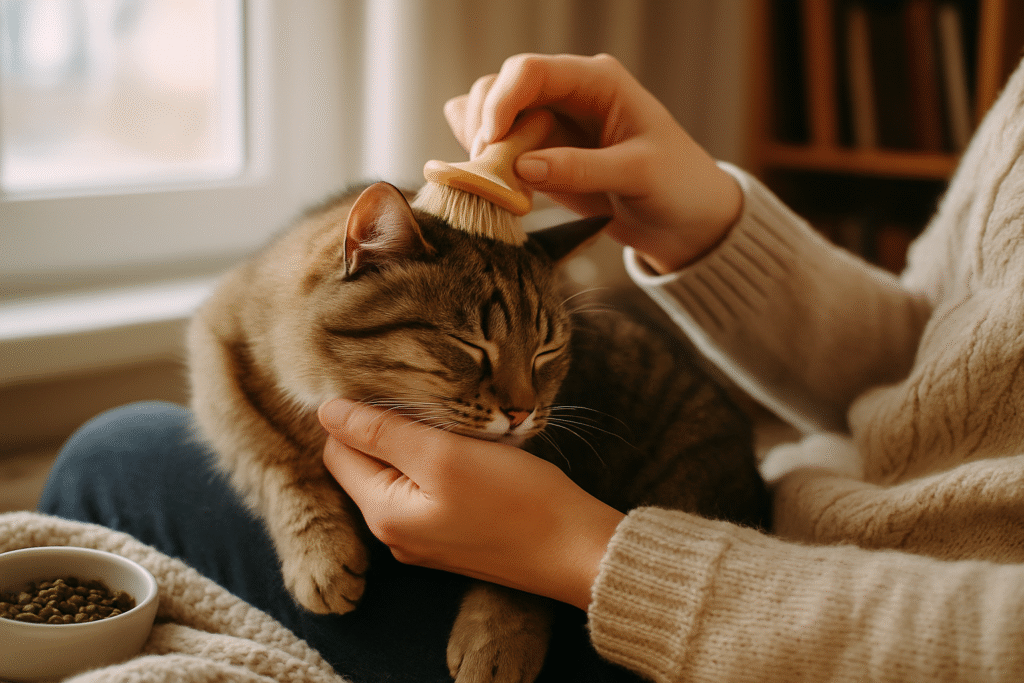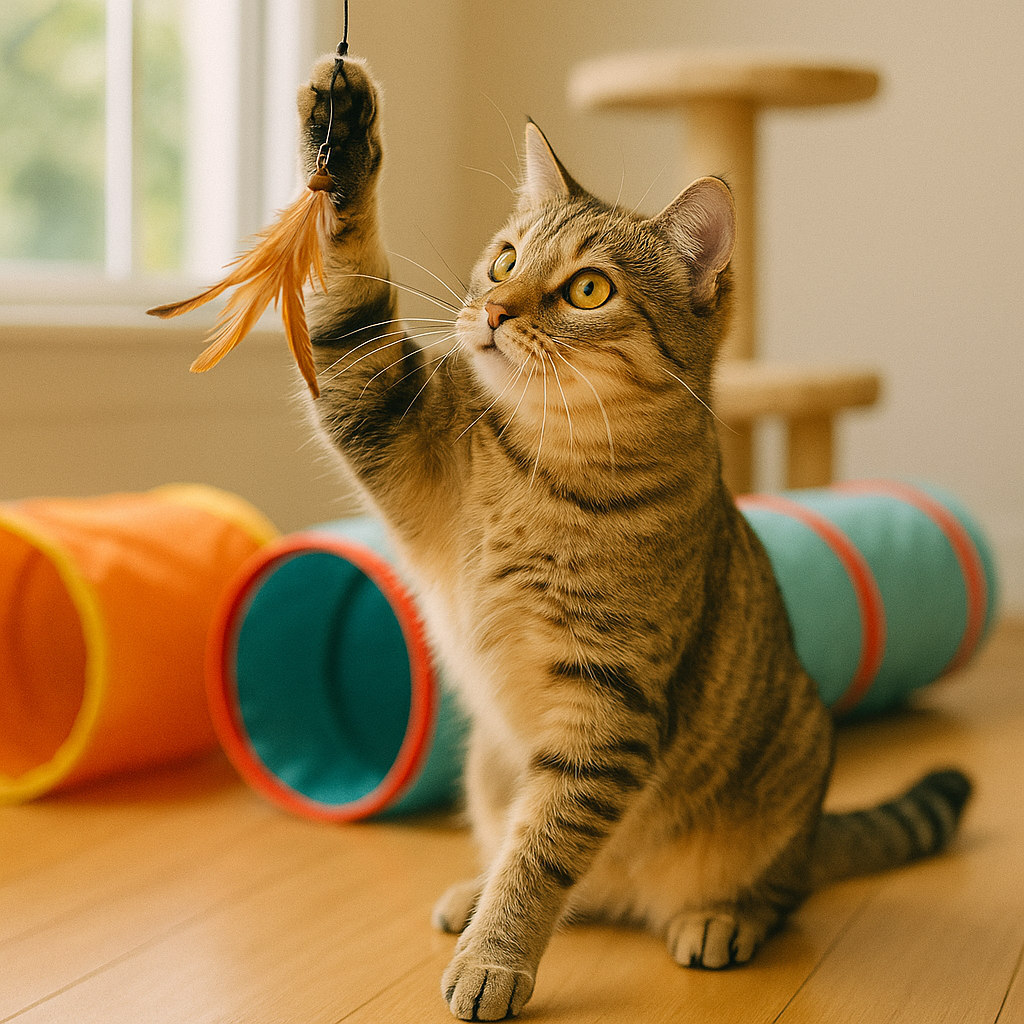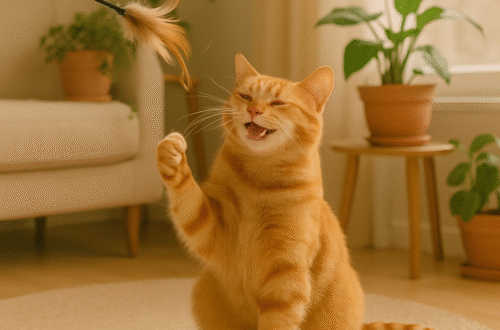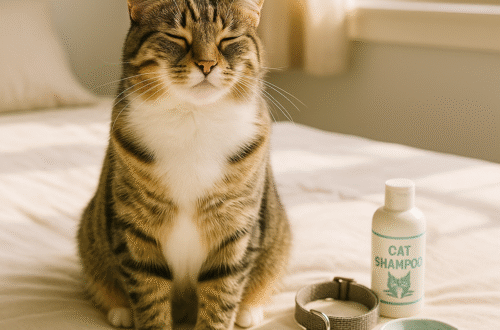Why Indoor Cats Desperately Need Stimulation
Many cat owners believe that keeping their feline friends indoors is the safest choice and in many ways, it is. No cars, no predators, no risky weather. But what we often forget is that indoor cats face a hidden danger: boredom.
Without the sights, smells, and challenges of the outside world, indoor cats can quickly become under-stimulated. This can lead to anxiety, weight gain, destructive behavior, and even depression. Just like humans, cats need more than food and shelter they crave mental, physical, and emotional engagement.
The good news? You don’t need a huge budget or a big house to enrich your cat’s life. With just a few simple changes, you can turn your home into a playful, stimulating environment that keeps your cat happy and healthy.
In this guide, you’ll discover 5 smart and practical ways to bring out your indoor cat’s natural instincts from sensory play to interactive feeding. Let’s dive in!
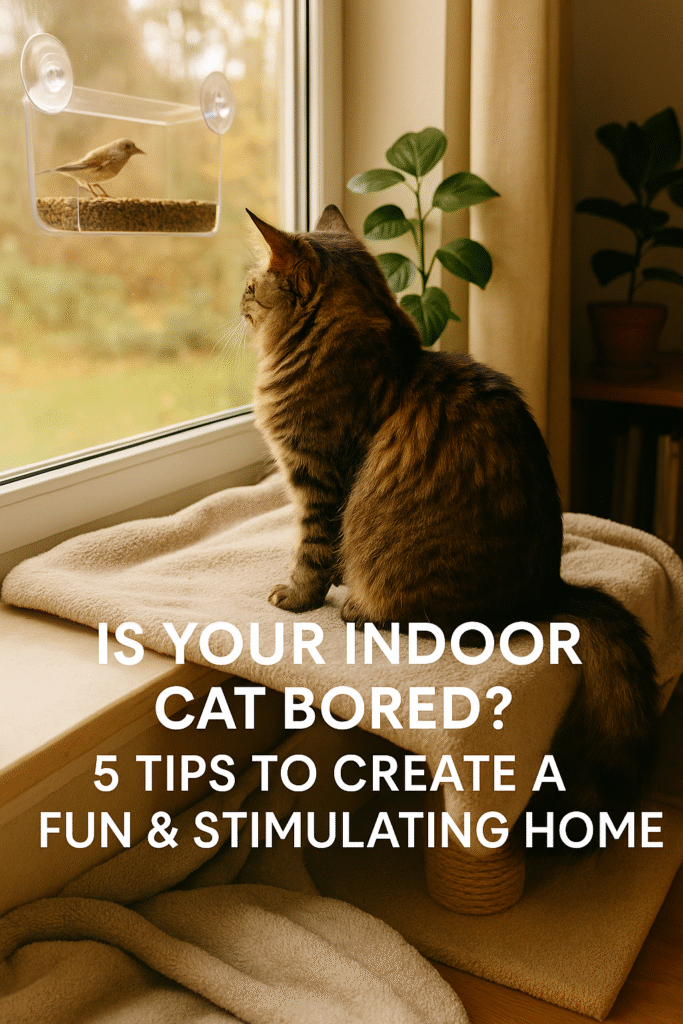
1. Environmental Enrichment Bring the Outside In
Your cat may not roam outside, but that doesn’t mean they can’t experience the excitement of the natural world. One of the easiest and most effective ways to stimulate your indoor cat is to enhance their environment with opportunities to explore, climb, and observe.
Start by giving your cat visual access to the outdoors. A window perch or cat hammock placed near a busy window offers hours of entertainment. Add a bird feeder or squirrel feeder just outside the window it becomes your cat’s version of “Catflix.”
Next, introduce vertical spaces like cat trees, wall-mounted shelves, or even the top of bookshelves. Cats love to climb and perch in high places where they can observe their territory it makes them feel confident and secure.
Lastly, don’t underestimate the power of changing things up. Rearranging furniture, rotating scratch posts, and adding new textures (like rugs, cardboard, or soft blankets) gives your cat something “new” to explore, even in a small space.
These simple tweaks can spark curiosity and give your cat a sense of territory, control, and daily discovery.
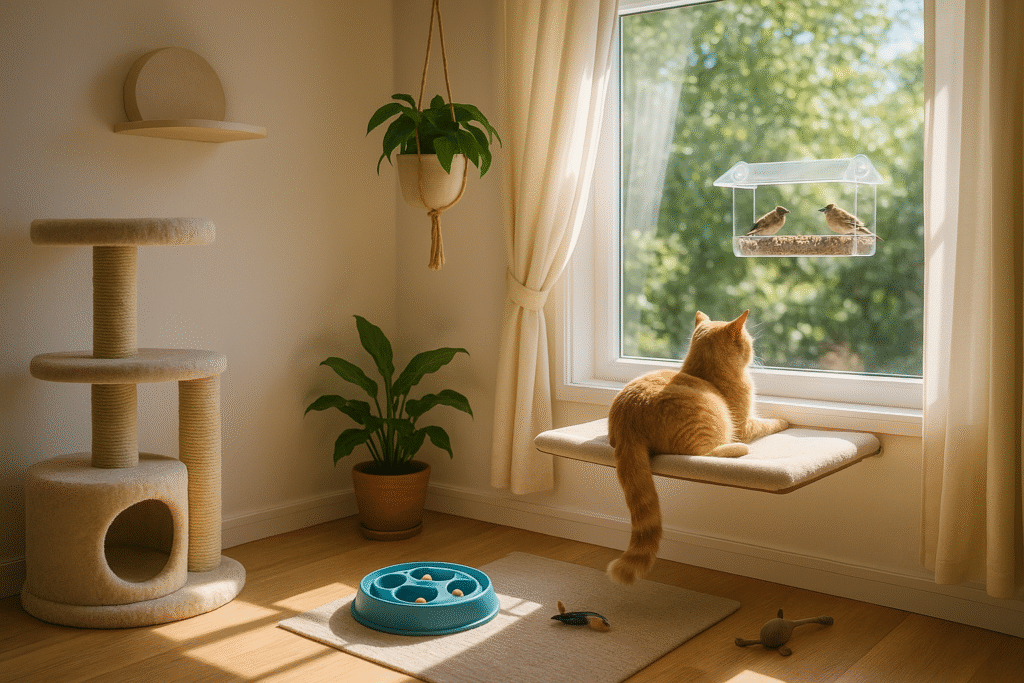
2. Sensory Stimulation Engage Their Senses
Cats are wired to experience the world through their senses scent, sound, touch, and even taste. Stimulating these senses indoors can keep their minds sharp and moods balanced.
Let’s start with scent. Cats have a powerful sense of smell, and introducing safe herbal scents like catnip, silvervine, or valerian can lift their mood. You can sprinkle dried catnip on scratchers, offer refillable scent toys, or even grow a small pot of cat grass near a window.
Next, think about sound stimulation. Try leaving the window slightly open (with a secure screen) to let in birdsong or city noise. Or play curated “cat TV” videos on YouTube there are playlists of birds, mice, and soothing nature sounds made just for cats.
Finally, include a mix of textures in your cat’s environment. Provide soft fleece blankets, rough cardboard scratchers, shaggy rugs, and plush toys. The variety helps your cat explore through their paws, nose, and face creating a multisensory playground inside your home.
Engaging your cat’s senses helps reduce stress, prevent boredom, and mimic the diversity of outdoor life all within the safety of your living room.
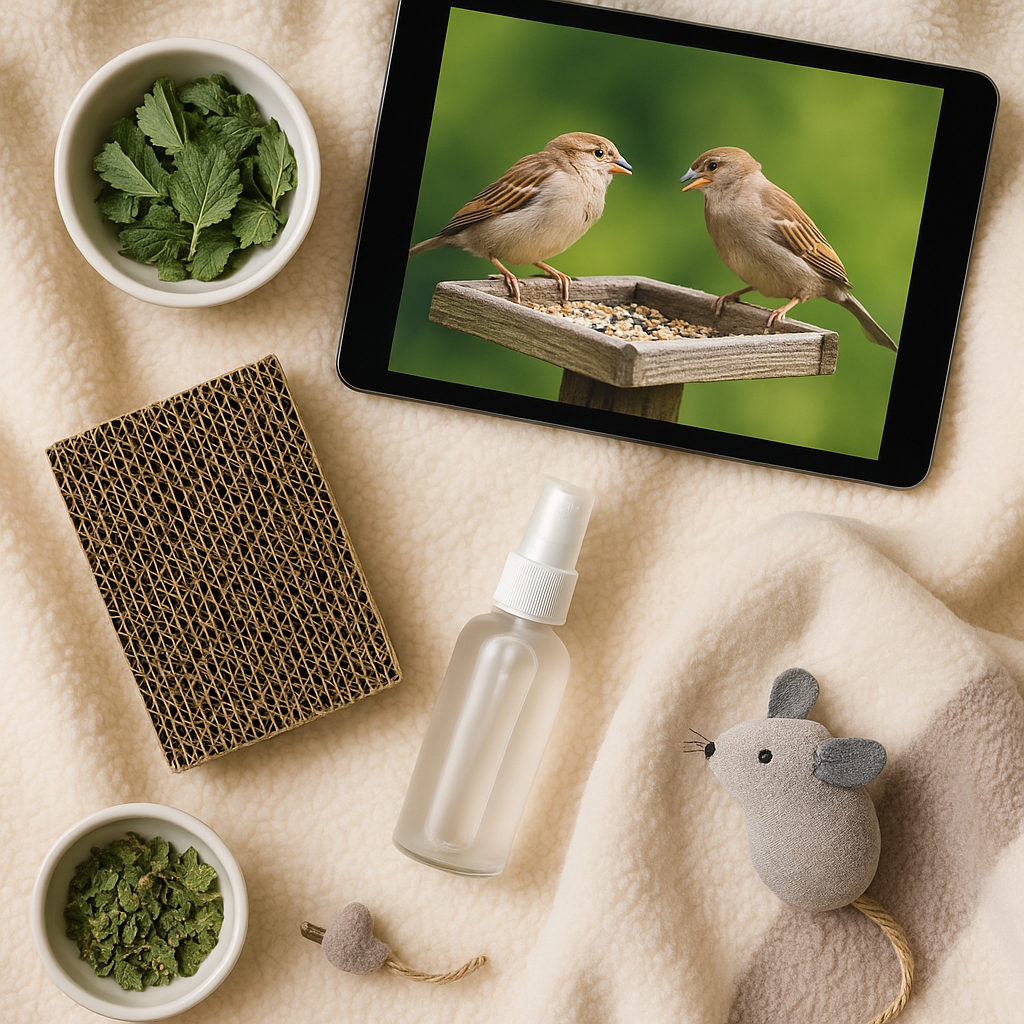
3. Interactive Play Make Them Hunt Again
Even the laziest lap cat is a natural-born predator. In the wild, cats stalk, chase, and pounce multiple times a day. Indoor cats still have that instinct they just need the right outlet to let it out.
Interactive play is the key. It’s not just about toys lying around it’s about you actively engaging with your cat in short, focused bursts of movement and excitement.
Use toys that mimic prey, like feather wands, fishing pole toys, and motorized mice. Move them like real animals: quick, unpredictable, and just out of reach. Let your cat stalk, chase, pounce and occasionally win. Ending the game with a “catch” keeps their confidence high and prevents frustration.
Try to play at least twice a day, especially during your cat’s natural hunting hours: early morning and evening. Sessions can be just 10–15 minutes enough to release energy, strengthen your bond, and satisfy their hunting instinct.
This kind of focused play isn’t just fun. It reduces aggression, curbs nighttime zoomies, and helps maintain a healthy weight.
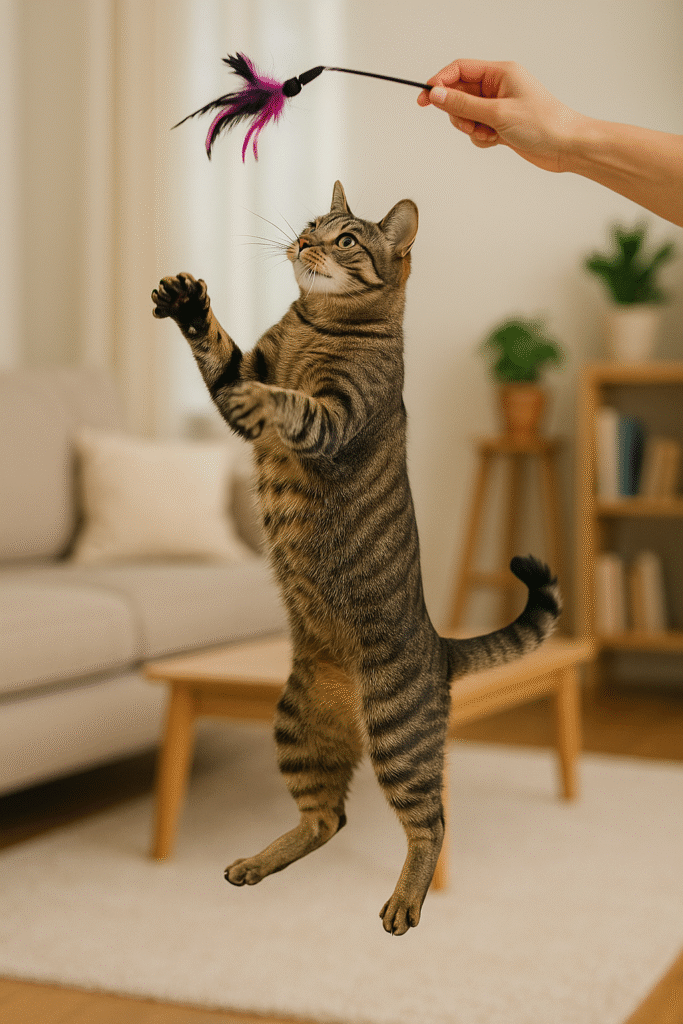
4. Puzzle Feeders Stimulate While They Eat
In the wild, cats don’t just walk over to a bowl they work for every bite. Hunting challenges their minds, hones their skills, and gives them a sense of accomplishment. For indoor cats, puzzle feeders recreate this experience in a safe and rewarding way.
Instead of free-feeding from a bowl all day, try giving part of your cat’s meals through interactive feeding tools. Puzzle feeders make them “think” to access food, turning mealtime into brain training.
You can start simple with treat-dispensing balls or wobble feeders. Or go DIY: a muffin tin with kibble covered by ping-pong balls, or a toilet paper roll with treats tucked inside. The goal isn’t to frustrate it’s to engage.
This not only slows down fast eaters (which improves digestion), but also keeps your cat’s mind active and reduces boredom between naps.
Bonus: puzzle feeding is excellent for overweight or anxious cats who benefit from having a “job” to do.
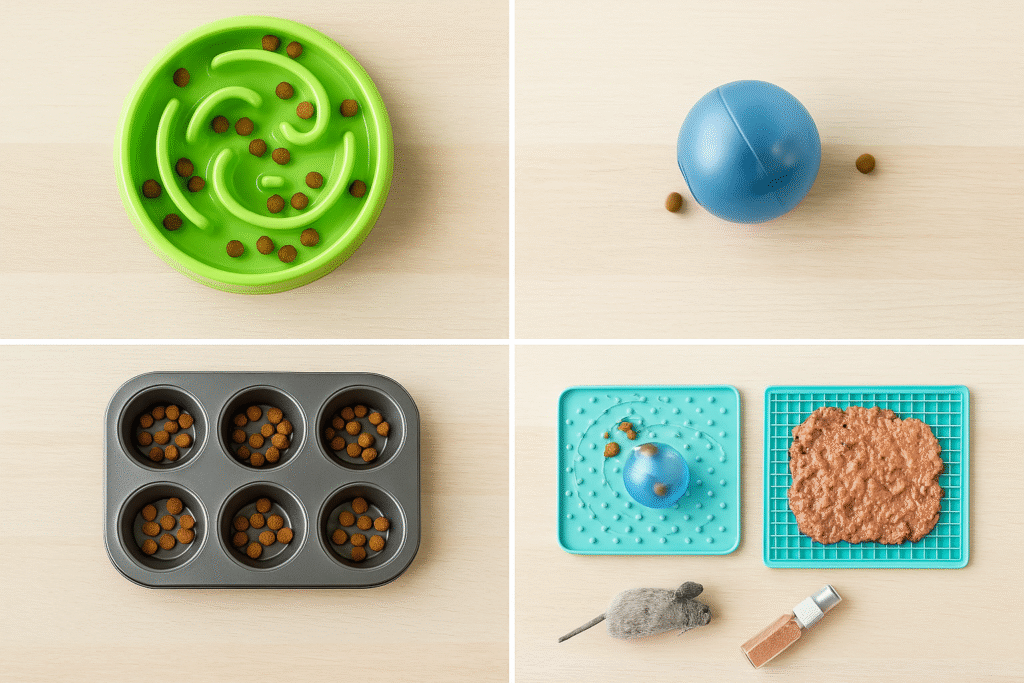
5. Social Enrichment You Matter Most
You might think of cats as independent creatures, but most indoor cats crave connection especially with their favorite human: you.
Social enrichment is one of the most underrated forms of stimulation. It doesn’t take fancy toys or elaborate setups just quality time, attention, and routine interaction.
Spend time petting, grooming, or even talking to your cat. Some cats enjoy learning simple tricks like high-fives or touching a target stick yes, cats can be trained! Clicker training or treat-based positive reinforcement keeps their minds active while strengthening your bond.
You can also enrich their social world by giving them a front-row seat to yours. Window perches near busy sidewalks, balconies with safety nets, or supervised “catio time” gives them a taste of the outside world safely.
Remember: you are the most stimulating and comforting part of your cat’s environment. Your voice, scent, and routine make them feel secure and that’s the foundation of enrichment.
